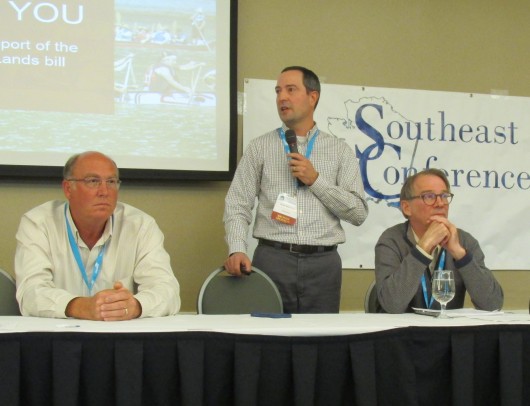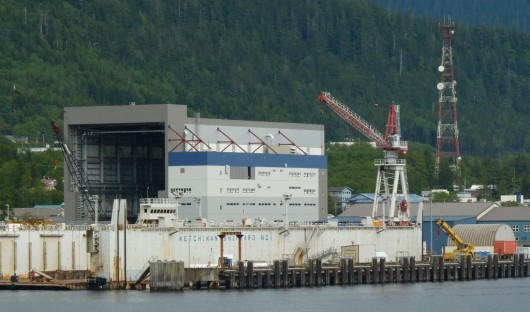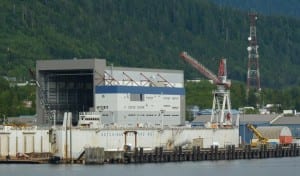
From left, Shawn Richardson, Brian Kleinhenz and Doug Ward were part of a panel discussion during Southeast Conference this week in Prince Rupert, BC.
Among the topics covered during this week’s Southeast Conference meeting in Prince Rupert, British Columbia, were opportunities for the region to expand its economy, or at least hold on to what it has.
During a panel discussion Wednesday, Doug Ward of Vigor Alaska’s shipyard in Ketchikan said that with two new Alaska Class ferries under construction, the shipyard needs more skilled workers. To that end, it’s working with the local public school system and the university to train welders for jobs that will be available soon.
“Steel is beginning to arrive every day now, we’re really ramping up production. We’ve
added about 20 jobs in the last couple of months, and we’ll be adding another 70-80 jobs to produce those two ferries,” he said. “What we’d like to do is be looking forward to the future and have other ship-building contracts and run that ship-building factory like a factory.”
Timber harvest in Southeast should see an increase since the recently completed land deal that transferred 70,000 acres to Sealaska, a regional Native corporation. Brian Kleinhenz talked about Sealaska’s plans to log that land, and a change in Sealaska Timber’s business model.
“One major shift is that we’re now targeting a timber harvest level that we feel to be sustainable indefinitely, and that’s going to be substantially lower than rates we’ve harvested in the past,” he said. “It’s going to mean a new reality for the timber industry. It’s going to mean a smaller footprint, it’s going to mean a smaller profit margin.”
Cleveland Peninsula near Ketchikan and Election Creek near Klawock will be the first two areas Sealaska Timber will log.
Mike Satre of Hecla Greens Creek Mine near Juneau gave an update on mineral extraction in Southeast. He said miners are pessimistic by nature, but recently, they have a good reason to be pessimistic. Satre said the outlook right now isn’t that great, because prices are down.
That’s just part of doing business for existing mines such as Hecla, he said, but for mines under development and looking for investors, it’s a big barrier.
“So, for the Southeast Alaska economy, this means no new mines in the near future,” he said. “I think a few years ago, we said we’re going to have a resurgence of mining in Southeast Alaska. We may still have that. We have two strong operating mines, we’ve got some great predevelopment projects out there, but it’s not going to happen probably in the next few years.”
But, Satre said, the market will swing back again at some point, so the industry should continue Alaska-based training programs to ensure a local workforce is available.
Southeast Conference is the official regional economic development organization for Southeast Alaska. It has about 180 members. The annual fall meeting rotates among member communities, and this year it was in Prince Rupert, British Columbia. The meeting wrapped up on Thursday.










